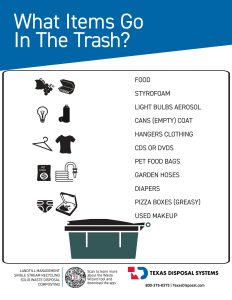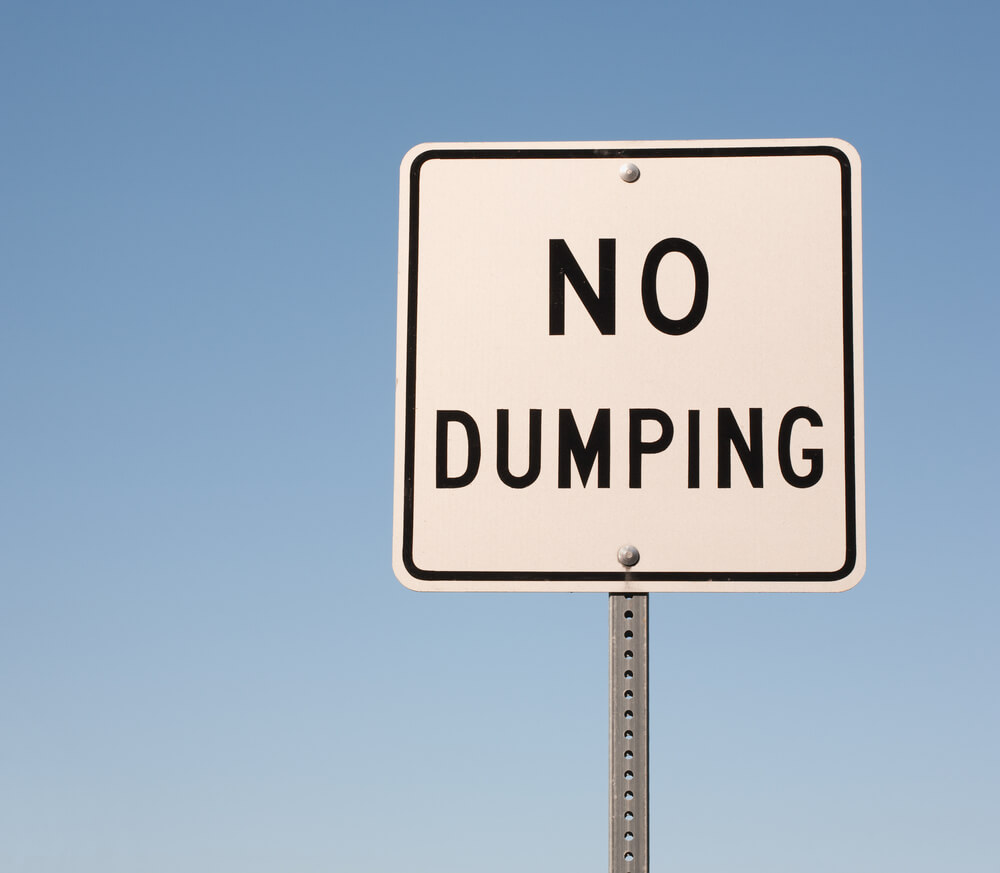Whether it’s the result of a move, the need for some spring cleaning or organizing a clearing out of an estate, facing a whole house cleanout can feel like a daunting experience. After all, it’s only natural to accumulate possessions over the years. You might not realize just how many things you have until you decide to clean out your entire house — and you may be completely shocked by the clutter and mess!
If this sounds familiar to you, don’t worry. Our guide will help simplify the house cleanout journey for you, turning what may feel like an overwhelming chore into a manageable process you can tackle confidently.
How to clean out a house full of junk
1. Plan your home cleanout
While it can be tempting to jump right in, it’s important to take the time to plan. Think of your house cleanout plan as your roadmap to success. Instead of taking a wrong turn and spending hours or even days wandering down a winding path that ultimately leads you back to where you started, you can tackle your house cleanout as efficiently as possible with the help of a carefully crafted plan. You’ll want to start with these steps:
Set goals
If you’re planning to clean out your house, setting clear goals is one of the best things you can do. After all, how will you know if you’re staying on track if you don’t have a goal to work towards?
Make sure you know why you need to clean out your house before beginning your whole house cleanout. Are you decluttering for spring or is it to prepare your house for selling? Or, are you helping a family member reduce their possessions?
Regardless of your reasoning, having a clear goal in mind can provide valuable guidance and keep you motivated every step of the way. Setting goals can also help you prioritize rooms or items, make decisions faster and enable you to measure your progress.
Take inventory
It’s also a good idea to go through every room and take inventory. For some people, this means simply noting the larger items that need to go and gauging how much work each room will require. For others, taking inventory involves listing every item in each room. Either way, taking stock during the planning stage can pay off later, as it will help you prepare to tackle your house cleanout mentally.
Create an organizing system
Doing this in advance will ensure you progress as efficiently as possible and know exactly what to do with different items.
Consider using clearly labeled boxes or bags for items you plan to keep, sell or donate to keep items categorized and avoid second-guessing. It’s smart to establish a dedicated spot within your house to store these boxes and bags to streamline your cleaning process.
Design a room-by-room plan with a timeline
Having a room-by-room plan and a timeline can help you break down the home cleanout process into manageable steps, keeping yourself from becoming lost, frustrated or overwhelmed.
Use the information you gathered when taking inventory to create a cleaning plan and pace yourself. Set clear boundaries and a reasonable time frame — and don’t forget that you don’t have to tackle everything at once. Instead, take on one room at a time and set aside a little time each day. Even 20-30 minutes a day can make a major difference and help you keep momentum, ensuring you won’t get overwhelmed later.
Work your cleaning schedule around your work and personal schedule to create a careful balance. If you have a major work deadline, take on some less-intensive rooms. If you have a lot of free time, consider cleaning one of your more cluttered rooms. Just remember there’s no right way to create a plan. Do what’s best for you, your needs and your time frame.
Consider what you’ll do for junk removal
Think about how you’re going to clean out the junk, or in other words, get rid of the items you don’t want or need anymore. After all, it can’t stay in your home. Most people donate or throw away the items they don’t need to keep, but don’t worry too much about this now, as we’ll dive into junk removal more in-depth below.
Decide where you’ll donate
If you plan on donating items, research your options before embarking on your whole house cleanout. While most collection centers will accept a wide range of goods, some are more particular and only take certain items. The last thing you want to do is show up with a truck full of items they won’t accept, so research what’s allowed in advance.
2. If you’re getting rid of large items, schedule your junk removal
If you have large items you don’t want anymore, getting rid of them can be difficult. That’s why you need to schedule a bulky item pick-up in advance. Depending on your trash service provider, you’ll need to check if they offer bulk trash pick-up, have restrictions or require everything to be out at a specific time and day.
Texas Disposal Systems offers bulky item pick-up for an efficient and convenient option as well as dumpster rentals, meaning you can dispose of large items or significant amounts of trash on your own schedule.
3. Start with removing obvious trash
When you start cleaning a room, remove the easiest items first: trash. If you see any broken items, multiple of the same items or things you haven’t touched in years, get rid of them. You can throw them out, recycle them or even upcycle them.
No matter what you do, the items you remove in this phase shouldn’t require much thought, as this is just an initial sweep. If you plan on doing several rooms in a row, consider renting a dumpster, as you can quickly toss all your trash away when it works best for you. Just keep in mind that you need to dispose of electronics properly.
4. Begin sorting clutter that’s left
After you’ve taken an initial pass and gotten rid of the obvious trash, sort through the clutter that remains. You should have plenty of space in the room to make a “keep pile”, a “donate pile” and a “store pile.”
However, determining which items belong in which category isn’t always easy. If you don’t know which items to keep, remember that keeping everything means that nothing is truly special. Remove anything you don’t love, need or use — and don’t feel you have to keep something just because it’s still usable. Be honest with yourself about what you actually use, what’s important and whether an item is holding you back. Additionally, consider following the 20/20 rule. If it costs less than $20 and takes less than 20 minutes to replace it, get rid of it.
5. Donate and sell unwanted items
Next, you can donate and sell items you don’t want to keep. You can donate items to various places, including local schools, charities and thrift stores. If you hope to make extra cash, you can sell unwanted items on the Facebook marketplace, through used item apps or at a garage sale. You can also turn to the TDS Citizens Convenience Center, a public disposal area for waste and used items. TDS will then sort and send any items to the recycling center, landfill or Resale Center as needed.
6. Organize and put away the items that remain
Finally, it’s time to organize and put away everything you want to keep. Start by returning all the stuff that will stay in the room. If you plan on moving an item to a different room that hasn’t already been decluttered, leave it in the current location until you’ve completed cleaning out its final destination.
To keep clutter down, consider renting a storage unit to house everything you don’t need in the immediate future. For example, storing seasonal items like holiday decorations, winter clothes or summer lounge chairs can make a major difference when it comes to your home’s appearance and available space.
How to empty a house quickly
If you’re in a rush and need to empty a house fast, whether that’s due to a move or an estate cleanout, there are a few ways you can cut corners.
- Prioritize key areas: Focus your efforts on high-traffic areas and rooms that potential buyers or new occupants will see first. This includes the living room, kitchen and bathrooms. This way, you create a favorable first impression while allowing more time to tackle less visible spaces later.
- Rent a dumpster: Renting a dumpster is one of the best ways to accelerate the house cleanout process, as it allows you to get rid of a large volume of items on your own time. For a reliable dumpster rental service, consider renting a dumpster from TDS.
- Hire a professional cleanout service: You can also leave it to the professionals if you’re really low on time. They can get the job done quickly, but you’ll have to shell out some cash and work on their timeline.
How to maintain a clean home after decluttering
Now that you have some tips for cleaning out your house, it’s important to maintain those results. Otherwise, you’ll be in the same position in just a few years. To prevent clutter and junk from accumulating again:
1. Create daily habits to prevent clutter
Stay in a decluttering mindset each day to prevent junk from accumulating and keep your house as tidy as possible. This means avoiding throwing your keys, bags and other items in a drop-zone by the front door, collapsing boxes from online orders promptly and returning everything to its proper home immediately after use. You should also make your bed daily, do dishes after every meal, open and sort mail as soon as it arrives, keep clothes in your closet, dresser, or hamper (not the floor!) and tidy up before you head to bed.
2. Put away seasonal items
Seasonal items take up a lot of space and are only useful for a few months out of the year. Put away seasonal items when they aren’t in use. Store them in the attic, the basement, the garage or a storage unit.
3. Put items away immediately
After you use something, put it away immediately. This will ensure that everything stays in its proper place, creating a cleaner, less cluttered environment and significantly reducing the time you have to set aside to declutter your space.
4. Regularly schedule a home cleanout
Just as you need to practice daily habits to keep your home clean, you should schedule home cleanouts regularly. Regular cleanouts help prevent clutter from accumulating, ensuring that your living spaces remain organized and conducive to a stress-free lifestyle.
Make house cleanouts a breeze with Texas Disposal Systems
Performing a whole house cleanout isn’t easy, but Texas Disposal Systems is here to help. We offer a wide range of services that can simplify and accelerate the house cleanout process.
Not only do we offer residential curbside solutions, such as trash, recycling and composting collection (check out our curbside service FAQs for more information), but we also provide residential dumpster rentals to help with junk removal. Whether you need a mini dumpster, a 20-yard dumpster, a 30-yard dumpster, or a 40-yard dumpster, our team will work around your schedule to get you what you need to get the job done.
We understand that junk can pile up quickly with a whole house cleanout, so if you can’t wait to get rid of your trash you can take it to the TDS Landfill or any of the TDS Transfer Stations. Find our gate rates and our locations here.
The TDS Waste Wizard is here to help with everything from clarifying local disposal guidelines to holiday schedules. You can even create a customized collection calendar for the trash, recycling and green waste pick-up in your area.
When it comes to cleaning out your home, you can rely on TDS to help. Request a quote today.



